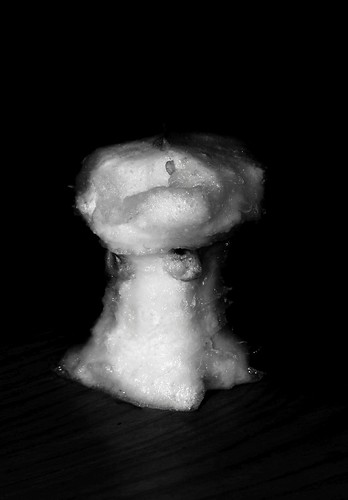Can nuclear fusion generate electricity in the future? It’s possible
Nuclear #Nuclear

The Christopher Nolan-directed film “Oppenheimer,” which details how the Jewish-American physicist created the atomic bomb, which uses the energy released when splitting an atom to cause extensive destruction, has become the highest-grossing biopic of all time.
Today, on Hefei City’s Science Island in Anhui Province, a group of Chinese physicists, engineers, and scientists have been working tirelessly for the past five decades to combine two or more atoms to form a single, heavier nucleus.

Tan Weiyun
A Fusion Reactor Zone in Hefei’s Shushan District
This process, known as nuclear fusion, has the potential to produce far more energy than an atomic bomb. It is the source of the sun’s energy. Hydrogen atoms combine to form helium atoms in the sun’s core, releasing enormous amounts of energy in the process.
Nuclear fusion produces no radioactive waste or long-lived radioactive isotopes, making it a considerably cleaner and safer energy generation technique than nuclear weapons.
It may be used to generate electricity and drive spaceships, among other things. However, the technology needed to generate controlled fusion reactions on Earth is still in development, and it will be a long time before it is commercially viable.
“The history of human evolution is, in fact, the history of humans’ search for energy,” according to Ye Hualong, a department director at the Chinese Academy of Sciences’ Institute of Plasma Physics (ASIPP) in Hefei.
Ye and his colleagues joke that they’re creating a sun – an artificial sun with massive energy output to provide heat and light. “By the time fusion technology becomes commercially viable, humanity’s long-standing quest for energy resources will have been realized,” he argued.
Behind him is the 1/8 vacuum chamber and overall installation experimental platform of the Comprehensive Research Facility for Fusion Technology (CRAFT), which resembles a doughnut. The double-shell structure with a D-sectional shape that stands silently in the No. 11 workshop of the Fusion Reactor Zone in Hefei’s Shushan District could be the key to unlocking the human powerpack.

Tan Weiyun
The 1/8 vacuum chamber and overall experimental platform of the Comprehensive Research Facility for Fusion Technology (CRAFT)

Tan Weiyun
“It was a 50-year effort by four generations of Chinese scientists. And I am proud to say that China is currently leading in fusion technology,” Ye said.
This April, in this zone, the world’s first fully superconducting tokamak (a type of nuclear fusion experimental device that uses a magnetic field and high temperatures to compress atomic nuclei to very high densities, releasing large amounts of energy) – the Experimental Advanced Superconducting Tokamak (EAST) device – achieved a stable long-duration high-confinement mode plasma operation for 403 seconds in its 122,254th experiment.
It was a big step forward in managing and maintaining plasma stability, which is critical for producing more efficient and longer-lasting fusion processes.

Tan Weiyun
An image of “Kuafu Chasing the Sun,” part of Chinese mythology, who ran for days without stopping until he finally caught up to the sun and tried to seize it, is displayed high above the facility.
“EAST has been operational for 17 years, with 20 rounds of experiments and 120,000 charge-discharge cycles,” Ye said. “It has broken more than 10 world records in the Tokamak operation.”
EAST’s operation time has increased from 30 seconds in 2010, to 60 seconds in 2012, to 100 seconds in 2017, to 300 seconds in 2022, to more than 400 seconds now, whereas all other devices in the world can only run for a few dozens of seconds in steady-state high-confinement plasma operation.
The artificial light shining forever in the future is no longer a pipe dream.
“Our goal is to generate electricity with fusion technology by the year 2049, which is the 100th anniversary of the founding of the People’s Republic of China,” Ye said. “And we must take the lead in achieving this.”